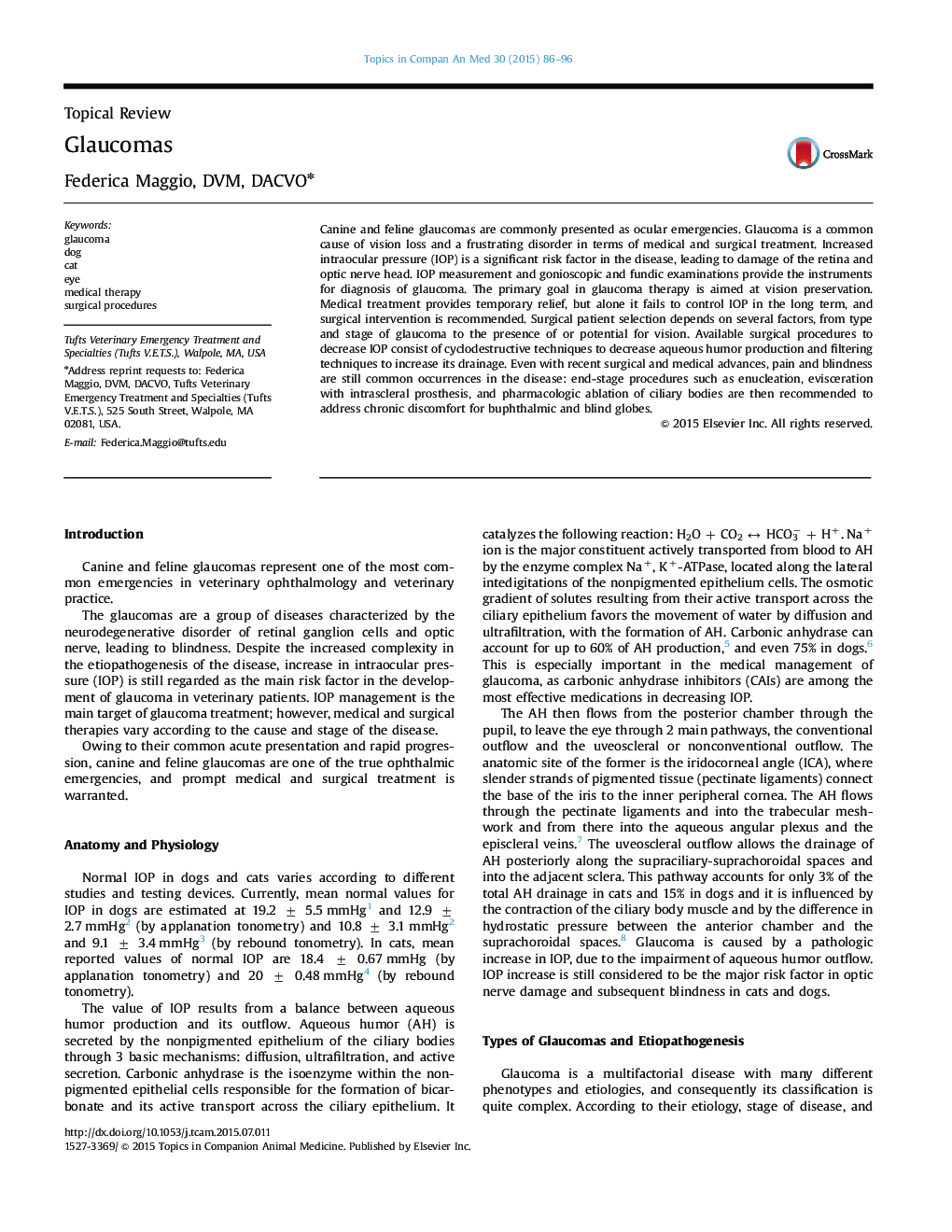| Article ID | Journal | Published Year | Pages | File Type |
|---|---|---|---|---|
| 2401020 | Topics in Companion Animal Medicine | 2015 | 11 Pages |
Canine and feline glaucomas are commonly presented as ocular emergencies. Glaucoma is a common cause of vision loss and a frustrating disorder in terms of medical and surgical treatment. Increased intraocular pressure (IOP) is a significant risk factor in the disease, leading to damage of the retina and optic nerve head. IOP measurement and gonioscopic and fundic examinations provide the instruments for diagnosis of glaucoma. The primary goal in glaucoma therapy is aimed at vision preservation. Medical treatment provides temporary relief, but alone it fails to control IOP in the long term, and surgical intervention is recommended. Surgical patient selection depends on several factors, from type and stage of glaucoma to the presence of or potential for vision. Available surgical procedures to decrease IOP consist of cyclodestructive techniques to decrease aqueous humor production and filtering techniques to increase its drainage. Even with recent surgical and medical advances, pain and blindness are still common occurrences in the disease: end-stage procedures such as enucleation, evisceration with intrascleral prosthesis, and pharmacologic ablation of ciliary bodies are then recommended to address chronic discomfort for buphthalmic and blind globes.
